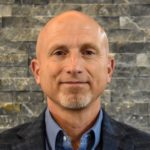
I love summer and especially the July 4th holiday. In the small town where I live, we have an event called “Jonesborough Days.” It’s a two-day celebration with a parade, food vendors, music, fireworks and my favorite, the free watermelon.
The weather is usually hot in July here in East Tennessee, and there is nothing like biting into an ice-cold slice of perfectly ripe watermelon, letting the juice run down your chin, spitting out the seeds and looking for some water to wash off those deliciously sticky fingers.
This July is also the time for us to be preparing for the changes to the MDS that will be effective on October 1. There is so much for us to consider as we approach this historic adjustment.
One principle that undergirds all these changes and should be the foundation of everything we do for our residents, is that the care we provide ensures that each resident receives the appropriate treatment and services to, “attain or maintain his or her highest practicable physical, mental and psychosocial well-being.”
Mentioned no less than 72 times in the State Operations Manual Appendix PP, highest practicable physical, mental and psychosocial well-being is defined as “…the highest possible level of functioning and well-being, limited by the individual’s recognized pathology and normal aging process.”
Furthermore, “highest practicable” is determined through the comprehensive resident assessment and by recognizing and competently and thoroughly addressing the physical, mental or psychosocial needs of the individual.”
Maybe I’ve just been in the holiday spirit, but I can’t help but hear, “Let freedom ring!”
With MDS 3.0 v1.18.11, it seems to me that we have a significant opportunity to consider more fully the idea of “highest practicable physical, mental and psychosocial well-being,” especially since section GG will be the final say, across the PAC spectrum, with regard to resident functional ability and goals.
In the FY 2024 rule-making cycle so far, CMS has proposed the adoption of the Discharge Function Score (DC Function) measure beginning with the FY 2025 SNF QRP.
The SNF Discharge Function Score Measure determines how successful each SNF is at achieving an expected level of functional ability for its residents at discharge. The final Discharge Function Score for a given SNF is the proportion of that SNF’s stays where a resident’s observed discharge score meets or exceeds their expected discharge score.
This new measure would replace the topped-out SNF QRP Application of Functional Assessment/Care Plan measure.
Also, if the proposed changes to the SNF QRP are finalized, CMS plans to dispense with two more SNF QRP functional outcome measures, the Change in Self-Care and Mobility Scores for Medical Rehabilitation Patients.
That will leave only three SNF QRP measures addressing discharge outcomes based on standardized self-care and mobility items in section GG.
The proposed discharge function score measure, in particular, is intended to “…show that SNFs with low scores are not producing the functional gains that they could be for a larger share of their residents and would provide actionable feedback to SNFs that has the potential to hold providers accountable and encourage them to improve the quality of care they deliver.”
It seems to me that this is an opportunity to step out of the weed bed that having to consider quality measures driven by sections G and GG has created and focus clearly on how well we are doing in helping our residents attain their highest practicable physical, mental, and psychosocial well-being from one standard set of metrics.
Maybe it’s just the lingering holiday spirit again, but I can’t help but hear “independence.”
We have the responsibility, the privilege and the joy of helping those we care for to achieve higher levels of physical freedom and independence. Now there is a standardized QRP measure to gauge how well we are doing.
Many of the other new items on MDS 3.0 v1.18.11, like those that identify social determinants of health, will press us into understanding how we can accomplish this in other aspects of our resident’s care needs as well.
I am patriotic. I grew up in an era where being thankful for our freedoms was a way of life.
Remember the poem on the base of the Statue of Liberty? “Give me your tired, your poor, Your huddled masses yearning to breathe free, The wretched refuse of your teeming shore. Send these, the homeless, tempest-tossed to me, I lift my lamp beside the golden door!”
Perhaps in that poem can be found some of the hope we impart to those who enter the doors of our SNFs like freedom, liberty, independence. In other words, the highest practicable physical, mental and psychosocial well-being.
This year, I celebrated the 4th of July as I always do, like the big kid that I am. I watched the parade, ate festival food and watermelon, listened to great music, and was out under the night sky to watch the fireworks.
I’m physically able to do those things, and I’m grateful. And I’m glad that I can play a small part in helping those who can’t regain some ability to do the things they might enjoy doing again.
It’s Independence Day y’all.
Joel VanEaton, BSN, RN, RAC-CT, RAC-CTA, is a master teacher and the executive vice president of PAC Regulatory Affairs and Education at Broad River Rehabilitation.
The opinions expressed in McKnight’s Long-Term Care News guest submissions are the author’s and are not necessarily those of McKnight’s Long-Term Care News or its editors.
Have a column idea? See our submission guidelines here.




